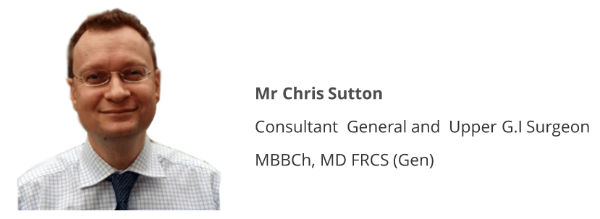Mr Chris Sutton, Consultant General and Upper Gastrointestinal Surgeon, at Spire Leicester Hospital is now performing Stretta®, a safe and effective non-surgical treatment for patients suffering from GORD (Gastro-Oesophageal Reflux Disease).

Mr Sutton commented:
“I have been extremely impressed with the rapidity of the post operative recovery and the consistently good clinical results delivered by Stretta® therapy for primary reflux patients and for revisional patients both post Bariatric surgery and post fundoplication.”
The NICE-approved Stretta® therapy is suitable for patients who do not respond to long-term medications, wish to avoid invasive surgery and experience recurring acid reflux symptoms following a weight-loss procedure.
Mr Sutton is the first UK Physician to treat post-sleeve gastrectomy, gastric band and bypass surgery patients with the Stretta® treatment, resulting in good outcomes.
During the 45-minute outpatient Stretta® treatment and a small dose of anesthesia, Mr Sutton introduces a special catheter through the patient’s mouth into the oesophagus. The non-ablative radiofrequency energy is delivered via the catheter into the lower oesophageal sphincter (LOS) with the aim to strengthen the valve and improve its function. The stronger and thicker valve prevents regurgitation and reflux.
Stretta® clinical studies show improvement in every measureable outcome for Gastro-Oesophageal Reflux Disease (GORD), including up to a 93% patient satisfaction score, while demonstrating symptom relief lasting a minimum of 4 years.
The recent 10-year Stretta® study• confirms that in patients with refractory GORD after a laparoscopic Nissen Fundoplication (LNF), Stretta resulted in sustained improvement with near equivalence and slightly better outcomes than the non-LNF patients.
The study demonstrated that at 10-year follow up, refractory LNF patients can be treated with Stretta safely and effectively with fewer complications in comparison with LNF revision and chronic medication use.
Noar, M., Squires, P. & Khan, S. Surg Endosc (2016). doi:10.1007/s00464-016-5296
